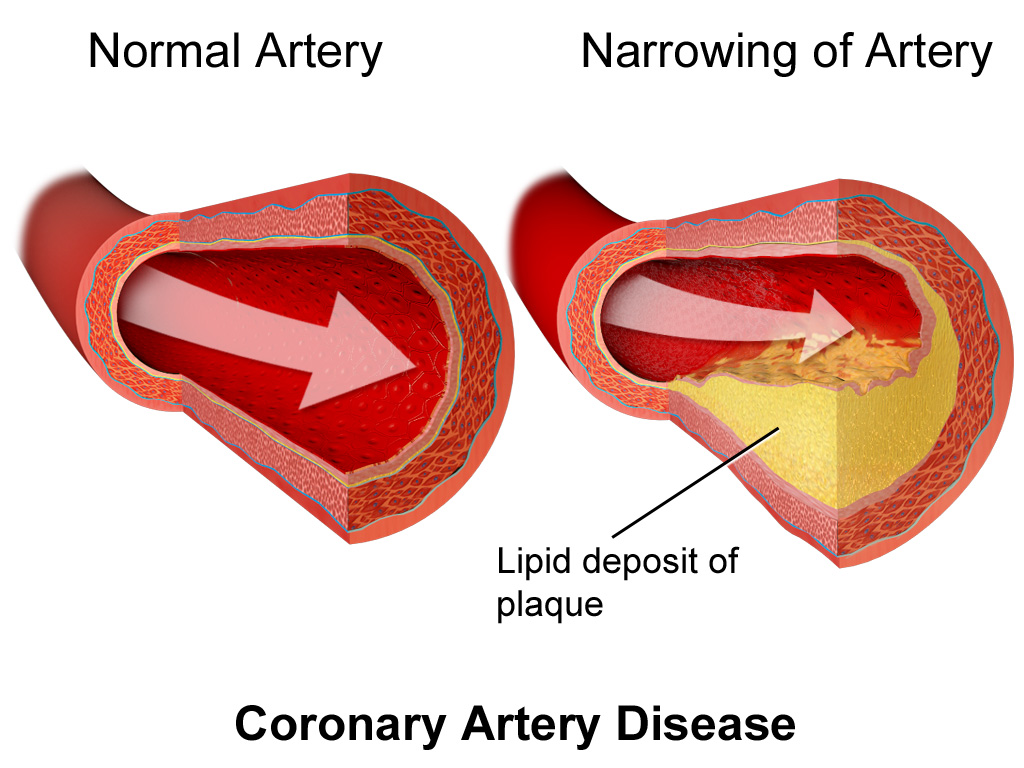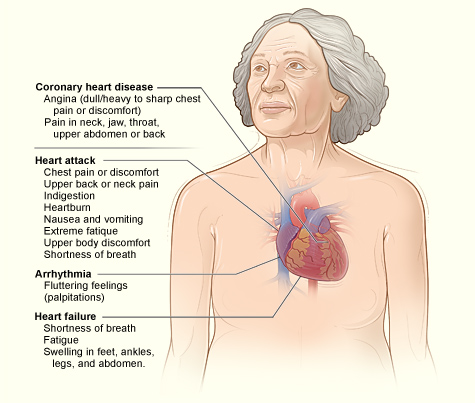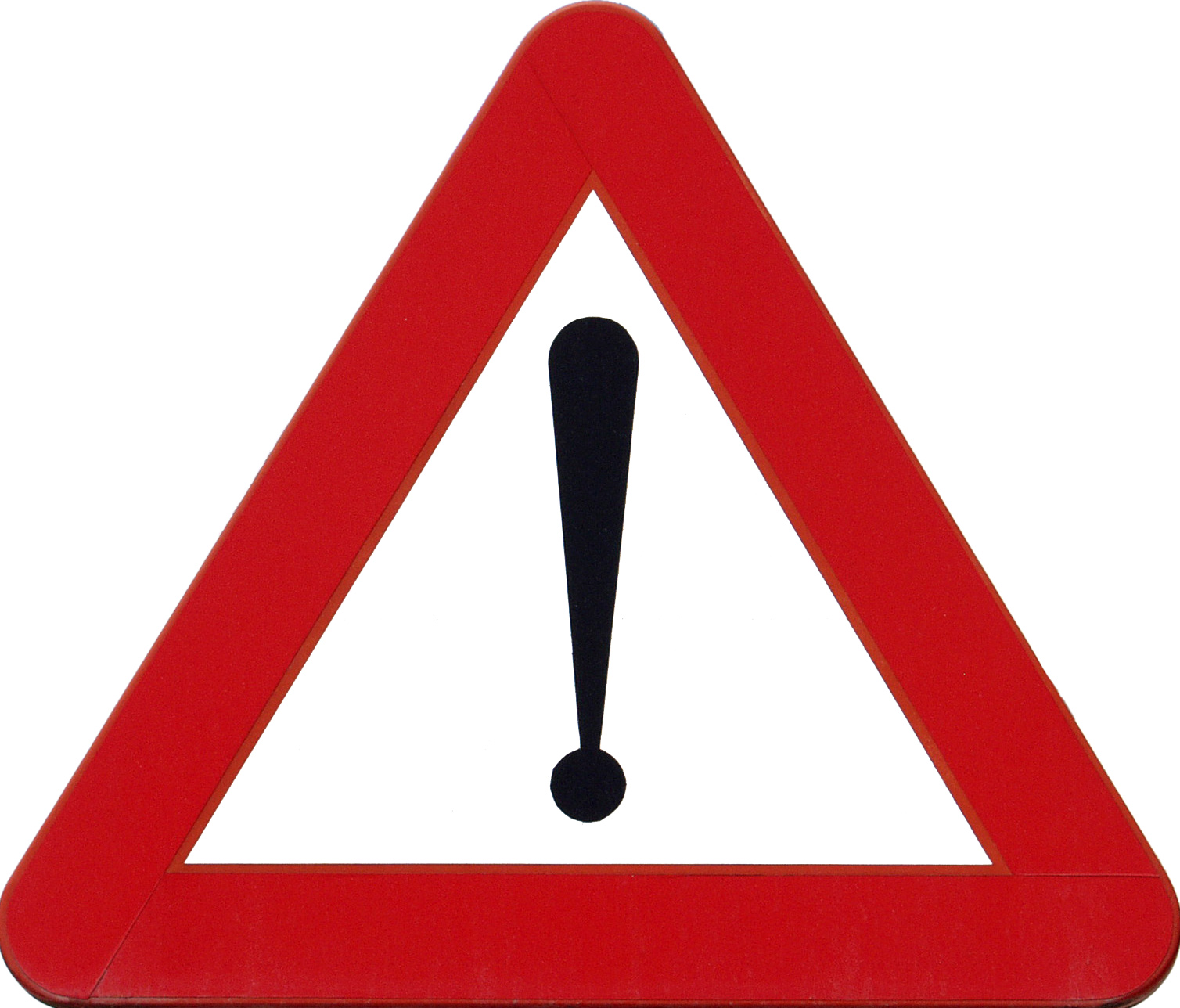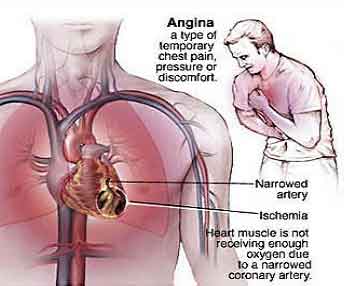 The following page will help you to learn the basics about coronary artery disease, also known as CAD and Coronary Heart Disease. You’ll also learn how to prevent and even reverse coronary artery disease safely without toxic drugs or surgery.
The following page will help you to learn the basics about coronary artery disease, also known as CAD and Coronary Heart Disease. You’ll also learn how to prevent and even reverse coronary artery disease safely without toxic drugs or surgery.
This is valuable information and since coronary artery disease is associated with atherosclerosis, in fact they are “soul mates,” you may also want to seriously consider my free no obligation eCourse: –“Reversing Atherosclerosis”
What Is Coronary Artery Disease?
 Coronary artery disease is the leading cause of death in the United States for both men and women. Each year, more than half a million Americans die from CAD. Coronary artery disease is a condition in which plaque (plak) builds up inside the coronary arteries. These arteries supply your heart muscle with oxygen-rich blood.
Coronary artery disease is the leading cause of death in the United States for both men and women. Each year, more than half a million Americans die from CAD. Coronary artery disease is a condition in which plaque (plak) builds up inside the coronary arteries. These arteries supply your heart muscle with oxygen-rich blood.
Plaque is made up of fat, cholesterol (ko-LES-ter-ol), calcium, and other substances such a fibrin that circulate in the blood. When plaque builds up in the arteries, the condition is called Atherosclerosis (ATH-er-o-skler-O-sis). Plaque narrows the arteries and reduces blood flow to your heart muscle. It also makes it more likely that blood clots will form in your arteries. Blood clots can partially or completely block blood flow.
When your coronary arteries are narrowed or blocked, oxygen-rich blood can’t reach your heart muscle. This can cause angina (an-JI-nuh or AN-juh-nuh) or a heart attack. Angina is chest pain or discomfort that occurs when there is NOT enough oxygen-rich blood flowing to an area of your heart muscle. Angina may feel like pressure or squeezing in your chest. The pain also may occur in your shoulders, arms, neck, jaw, or back (between the shoulder blades).
 Heart attack occurs when blood flow to an area of your heart muscle is seriously compromised or completely blocked. This blockage, most often caused by a clot or plaque rupture, prevents oxygen-rich blood from reaching that area of heart muscle and causes it to die. Without quick treatment, a heart attack can lead to serious heart damage that ends up causing more complications such as ventricular tachycardia (V-tach or VT), heart failure and even death.
Heart attack occurs when blood flow to an area of your heart muscle is seriously compromised or completely blocked. This blockage, most often caused by a clot or plaque rupture, prevents oxygen-rich blood from reaching that area of heart muscle and causes it to die. Without quick treatment, a heart attack can lead to serious heart damage that ends up causing more complications such as ventricular tachycardia (V-tach or VT), heart failure and even death.
Over time, CAD can weaken the heart muscle and lead to heart failure and arrhythmias (ah-RITH-me-ahs). Heart failure is a condition in which your heart can’t pump enough blood throughout your body. Arrhythmias are problems with the speed or rhythm of your heartbeat.
Coronary Artery Disease Kills
Coronary artery disease is the most common type of heart disease. It’s the leading cause of death in the United States for both men and women. Lifestyle changes, medicines, and/or medical procedures are the usual mainstream medicine strategies to either prevent or treat CAD in most people. However …
With the continued rise of artery disease anyone with a functioning brain should be asking WHY because the rise in artery disease would definitely suggest that mainstream medicine strategies simply aren’t working very well.
[youtube NZ14XjOQoFY]
If you have been diagnosed with coronary artery disease and wish to get rid of it you can learn how to reverse coronary artery disease and it’s insidious partner atherosclerosis simply by registering for my free, no obligation eCourse –“Reversing Atherosclerosis”
Coronary Artery Disease Risk
 There are quite a few risk factors that come into play in regards to coronary heart disease. Some like aging and genetics are without solutions but the majority can be eliminated with lifestyle changes. Risk factors for coronary artery disease include:
There are quite a few risk factors that come into play in regards to coronary heart disease. Some like aging and genetics are without solutions but the majority can be eliminated with lifestyle changes. Risk factors for coronary artery disease include:
- Age. Can’t stop aging and getting older increases your risk of damaged and narrowed arteries.
- Sex. Men are at greater risk of coronary artery disease. Risk for women increases after menopause.
- Family history. A family history of heart disease is associated with a higher risk of coronary artery disease, especially if a close relative developed heart disease at an early age. Your risk is highest if your father or a brother was diagnosed with heart disease before age 55, or your mother or a sister developed it before age 65.
- Smoking. Nicotine constricts blood vessels. Carbon monoxide can damage their inner lining, making them more susceptible to atherosclerosis. Women who smoke at least 20 cigarettes a day have a six times greater risk than do women who’ve never smoked. Men who smoke triple their risk versus nonsmokers.
- High blood pressure. Uncontrolled high blood pressure can result in the hardening and thickening of arteries. It can also cause heart failure.
- High blood cholesterol levels. High blood levels of LDL cholesterol can increase the risk of atherosclerosis and plaque formations. A low level of high-density lipoprotein (HDL), known as the “good” cholesterol, also can promote atherosclerosis.
- Diabetes. Diabetes is associated with an increased risk of coronary artery disease. Both conditions share similar risk factors, such as obesity and high blood pressure.
- Obesity. Excess weight typically worsens other risk factors.
- Physical inactivity. Lack of exercise is associated with coronary artery disease.
- High stress. Unrelieved stress may damage arteries as well as worsen other risk factors for coronary artery disease.
- Risk factors often occur in clusters and may build on one another. Obesity leads to diabetes and high blood pressure. When grouped together, certain risk factors put you at an ever greater risk of coronary artery disease. For example, metabolic syndrome, a cluster of conditions that includes elevated blood pressure, high triglycerides, elevated insulin levels and excess body fat around the waist, increases the risk of coronary artery disease.
Sometimes coronary artery disease develops without any classic risk factors. Researchers are studying other possible factors, including:
- Sleep apnea. This disorder causes you to repeatedly stop and start breathing while you’re sleeping. Sudden drops in blood oxygen levels that occur during sleep apnea increase blood pressure and strain the cardiovascular system, possibly leading to coronary artery disease.
- C-reactive protein. C-reactive protein (CRP) is a normal protein that appears in higher amounts when there’s inflammation in your body. Chronic inflammation may be a risk factor for heart disease.
- Homocysteine. Homocysteine is an amino acid your body uses to make protein and to build and maintain tissue. But high levels of homocysteine may increase your risk of coronary artery disease.
- Fibrinogen. Fibrinogen is a protein in your blood that plays a central role in blood clotting. But too much may increase clumping of platelets, the type of blood cell largely responsible for clotting. That can cause a clot to form in an artery, leading to a heart attack or stroke. Fibrinogen may also be an indicator of the inflammation that accompanies atherosclerosis.
- Lipoprotein (a). This substance forms when a low-density lipoprotein (LDL) particle attaches to a specific protein. Lipoprotein (a) may disrupt your body’s ability to dissolve blood clots. High levels of lipoprotein (a) may be associated with an increased risk of cardiovascular disease, including coronary artery disease and heart attack.
Coronary Artery Disease Symptoms
 The main or most common symptoms of coronary artery disease are angina (chest pain) and shortness of breath. Both angina and shortness of breath usually occur during or right after exercise however, your first symptom could be a heart attack. That isn’t said to scare you, it is simply fact. Other symptoms of coronary artery disease can include:
The main or most common symptoms of coronary artery disease are angina (chest pain) and shortness of breath. Both angina and shortness of breath usually occur during or right after exercise however, your first symptom could be a heart attack. That isn’t said to scare you, it is simply fact. Other symptoms of coronary artery disease can include:
- Shortness of breath.
- Palpitations (irregular heart beats, or a “flip-flop” feeling in your chest).
- A faster heartbeat.
- Weakness or dizziness.
- Nausea.
- Sweating.
Coronary Artery Disease Treatment
Coronary artery disease treatment of course depends upon who your doctor is and what he or she thinks is the best approach. First line of defense is usually life style changes however lifestyle changes could also be coupled with drug therapy. Or …
If lifestyle changes don’t get the needed results then drug therapy comes into play. Then as a last resort a surgical procedure or five. Sometimes doctors skip the lifestyle changes and drugs and go straight to the surgical procedures in advanced cases where the other therapies look to be useless. Then there are those who think outside the box and learn how to not only prevent coronary artery disease but how to reverse it, get rid of it!
[youtube w4HsxChRgVA]
Just think of what life would again be like without chest pain. Without fatigue, high blood pressure and other symptoms. If you truly want to reverse coronary artery disease visit this site.